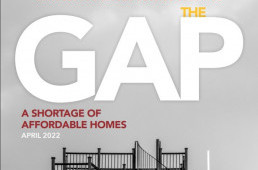
Last month, the National Low Income Housing Coalition (NLIHC) released their annual report highlighting the continued struggles of extremely-low income renters (households earning 30 percent or below the area median income). Both nationally and locally, there remains a persistent shortage of affordable and available homes to renters in this income category. We'll take a closer look at some of the specific data below.
The report provides startling numbers on the national scale.
The report breaks down its findings by state. Below are key points from the data specific to Texas.
Specific data for each state can be found here.
The report concludes with a sobering reminder that rising inflation and rents continue to pose vexing challenges to extremely low-income renters. However, it does highlight some federal interventions and investments that could help address the persistent shortage of affordable homes available to those with the biggest financial impediments.
We finance the creation of rental homes for extremely low-income renters. Thanks to a collaboration with the Health and Human Services Commission, we launched the Affordable Housing Partnership to provide funding for affordable, accessible, community-integrated housing for extremely low-income Texans with persistent health challenges. To date, we've awarded $2.1 million in forgivable loans to finance the construction of 28 units in developments located in Dallas and Travis counties.
We provide training and capacity building to supportive housing developers.
In 2020, we partnered with the Corporation for Supportive Housing to launch the Texas Supportive Housing Institute which provides training and technical assistance to development teams interested in building and operating supportive housing in their communities. Since its inception, we've trained eight development teams across the state that are working to bring hundreds of new supportive housing units online.
We provide grants to nonprofits to assist very low-income households. Our Texas Foundations Fund program provides grants to nonprofits to assist very low-income households. To date, we have invested more than $5.2 million in grant funding for home repairs and supportive housing services.
On the House blog posts are meant to provide general information on various housing-related issues, research and programs. We are not liable for any errors or inaccuracies in the information provided by blog sources. Furthermore, this blog is not legal advice and should not be used as a substitute for legal advice from a licensed professional attorney.
TSAHC reviews all blog comments before they are posted to ensure a positive experience for our online community. Off-topic comments; hostile, derogatory or deliberately insulting comments; and comments specifically promoting goods and services will not be posted.
Approved comments will be published in their entirety. Personal information will not be removed unless it pertains to someone other than the person submitting the comment. For more information, please see our Comment Posting Guidelines.
To remove a previously submitted and published comment, please contact Anna Orendain at [email protected].
If you have a question regarding any of TSAHC's programs, please contact us.